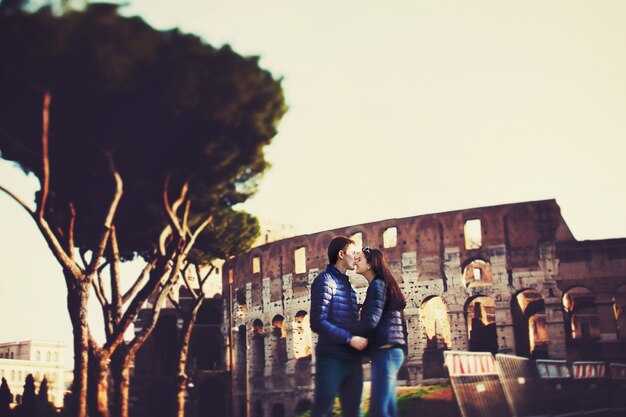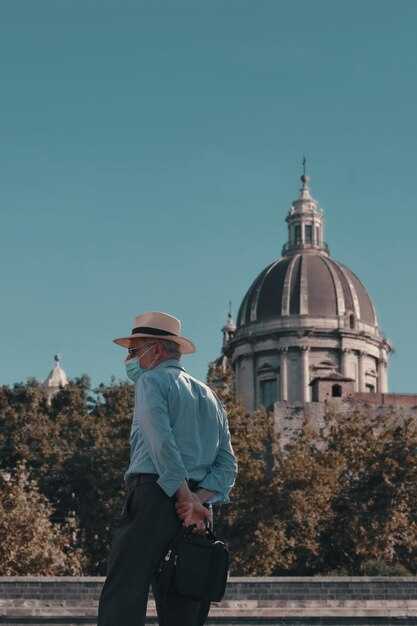Begin at Plaza de Mayo at dawn to feel the city breathe and map your destination for a day of memory. In the central square, a column of light spills across the Casa Rosada, and the air carries the rich pulse of a town that has welcomed migrants, generals, and dreamers alike.
From there, wander toward the Teatro Colón, where an intricate interior houses frescoes and a history that pioneered modern stagecraft. The building stands on a block that has hosted operas, premieres, and debates since the 19th century, showing how culture and public life shaped the city.
In defensa, San Telmo’s streets run along a long block where a line of houses keep watch over markets and memories. Interested readers peek into the bares along the way, where conversations spill into the evenings. A mural by juan Díaz reveals memories of the port region and the people who kept trade running through the years.
Head to La Boca, where yellow houses line the Caminito and frescoes brighten a memory-rich town that kept its color even as ships shifted the coast. The nearby stadium anchors a living, breathing tradition, while street musicians and dancers keep the rhythm of the port alive.
Interested readers will map a region-wide loop that links Plaza de Mayo, San Telmo, La Boca, and Recoleta–like a compact atlas you can walk. Although quick, the route runs through layers of social history and architectural detail that draw the eye to every corner.
A History Lover’s Guide to Buenos Aires: Timeless Landmarks and Hidden Stories; – 5 Manzana De Las Luces
Start your exploration at 5 Manzana De Las Luces by entering through the gate on Defensa Street and dedicating about 40 minutes to trace the jesuítica core: the old Colegio Nacional, the nearby basílica, and the winding lanes that connect these spaces. This is a concrete recommendation to begin here, a must for many visitors.
Within the block, the jesuítica education network shaped regions across argentina and argentinas, serving the elite with schools and a network that linked to missions in Asia; facades and interiors still show painted ceilings and careful stonework that speak to histórico time.
Hidden stories: a cave beneath the street floor is whispered to connect to early Jesuit cellars; tourist guides sometimes include these spaces, and you can see exhibitions and a collection that illuminate the era. Below the cobbles, mayo events and the movement that formed the national memory are hinted in old maps and plaques.
Practical tips: sip coffee at cafes and sample food in nearby places; the 5 Manzana De Las Luces site is designated as a national historic site, so follow access routes and signs. This area suits a tourist who wants to explore urban history on foot and mix with local life.
From 5 Manzana De Las Luces, extend your walk to places along plata’s riverfront and surrounding plazas; the francis legacy appears in street names and plaques, and you will sense how the regions and nations of argentinas define a shared history. The experience invites you to explore the connections between the navy heritage, the early education networks, and the cultural food and arts around the block.
| Site / Aspect | Waarom het belangrijk is | What to do | Beste tijd om te bezoeken |
|---|---|---|---|
| Old Colegio Nacional | Centerpiece of the jesuítica education network within the block | Walk the arcaded corridors; read plaques; observe painted ceilings | Morning 9:00–12:00 |
| Basílica nearby | 18th-century church with quiet interiors | Admire architecture; look for histórico markers | Midday 12:00–14:00 |
| The cave beneath | Legendary subterranean space linked to early Jesuit cellars | Ask at the desk for guided access if available | Seizoen |
| Exhibitions and collection | Artifacts showing education, missions, and regional links | Review timelines; compare with connections to nations | Afternoon 14:00–17:00 |
Starting Point and Route: Where to begin on Manzana de las Luces

Begin at the Front Plaza and follow the clockwise route to catch the strongest light on granite façades and glimpse the block’s long history in a single walk.
Initial Stop: Front, Exhibits, and Local Life
At the front, the house-like jesuits buildings frame the space. The daily flow of locals passes the central courtyard, and a confitería next door and a pizzería across the street provide a natural break. The cave-like corridor opens into a gallery with displays and exhibits that present a rich, global narrative of the jesuits’ impact on education, urban design, and ecological thinking in the surrounding region. rafael, a local guide, provides a running commentary that notes the notable final panel reveals how the block grew from a school to a living showcase of Buenos Aires life–having played a pivotal part in city culture. If you’re a soccer fan, you may catch a quick game on a nearby court that adds a human touch to the scene.
Route Details: Practical Tips and Final Observations
From the front, you walk toward a second cluster of spaces where granite walls host more displays and a small ecological corner that illustrates adaptation to the city’s climate. The route is compact, sure to deliver a strong sense of place, and the confitería and pizzería offer opportunities to stay and reflect. The final takeaway is that the jesuits’ legacy remains visible in daily life and in the way surrounding streets accommodate visitors. This remarkable segment of Buenos Aires history showcases how global ideas took root in a regional setting.
Key Buildings on the Block: What to look for and why they matter
Begin at the Moreno-Defensa corner and walk a short loop; you’ll spot grand, acclaimed facades, houses, and stores that anchor the neighbourhood. Read the plaques to learn who funded restorations and which presidents or politicians once spoke from the doorway. The block’s layout–fronts facing the street and quiet spaces behind–shows how public life and private life shared the same space, more layers than a single plaque could tell.
What to observe on the facade and the space behind
Look for a consistent rhythm of windows, the height of the cornices, and the transition from stone to brick. A well-preserved corner often marks a historical frontier between eras; the back often hides a small cave-like courtyard used by residents or shopkeepers. The lining of stores tells you about daily life–bakery, bookseller, hardware–each a clue to the block’s economy. Others kept tiny workshops behind the storefronts, a space not visible from the street. When you see a stadium nearby, notice how crowds spilled onto sidewalks and how merchants adapted to the rush.
Reading the people and the power on the block
Identify who lived here or ran the businesses: influential families, a team of artisans, or groups linked to peróns whose letters might still be in archives. The block records a continuum of policy and culture, from early grand style to modern, casual stores. Whether you walk with a notebook or a phone, you will read a story of resilience and change that connects asia-inspired details with local craft, a reminder that every block holds a thread of the city’s wider history, including miní spaces and traces of public life.
Untold Stories: Lesser-known legends and historical moments

Begin at Plaza de Mayo: read the inscriptions on the Cabildo and Casa Rosada and let the stories spill into your map, revealing how the city’s early political life forged a living legacy.
From there, these routes offer opportunities to read original accounts and compare them with living memory. If youre curious, youre about to discover an argentine history beyond the famous names, america’s southern front, and the everyday life of porteños.
-
Jesuits, ships, and hidden chapels
Originally, the Jesuits ran missions along the river and built networks that educated generations. Today, markers along the port stretches hint at those days. In mayo, a small chapel behind a market preserves a living memory and a miní artifact rumored to be part of a clandestine exchange between religious and civic groups. They remind you that history is a collective effort, not a single name, and youre invited to read the plaques and ask locals about these quiet corners; their stories are among the city’s enduring legends.
-
De stille architecten van de Meirevolutie
Op 25 mei 1810 katalyseerde de Cabildo Abierto een politieke opkomst die de stad veranderde. Naast de beroemde leiders vormden drukkers, klerken, soldaten en vrouwen de beslissing met discussies in achterkamertjes en gearchiveerde notulen die later in gepubliceerde geschiedenissen verschenen. Deze stemmen, aantoonbaar invloedrijk, onthullen hoe een handvol gewone acteurs een keerpunt stuurden dat nog steeds uw bezoek informeert.
-
Avenida de Mayo: een interculturele slagader
Strekt zich uit van de haven tot het Congres; de Frans-beïnvloede façades staan naast lokale stijlen, waardoor een erfenis van uitwisseling ontstaat die zowel Argentijnse autoriteiten als Amerikaanse lezers zouden herkennen. Langs de locaties ervan organiseerden Cafe Tortoni (open sinds 1858) en vroege theaters debatten en uitvoeringen die de politieke cultuur in mayo en daarbuiten voedden. De laan blijft een duurzame route voor het dagelijks leven en ceremoniële processies.
-
Verborgen herinnering langs de haven strekt zich uit
De rivieroever herbergt rustigere hoofdstukken: markten waar arbeiders zich organiseerden, verhalen over moedig leven en muurschilderingen die helden bewaarden die zelden voorkomen in gepolijste geschiedenissen. Tussen deze sporen kun je stemmen van de gemeenschap lezen en de blijvende verbinding tussen de zee en de stad. Of je nu bij zonsopgang wandelt of na zonsondergang slentert, je zult zeker iets ontdekken dat de kaart uitdaagt.
Educatief erfgoed: Musea, bibliotheken en instellingen die u kunt bezoeken
Begin bij het Museo Nacional de Bellas Artes in Recoleta voor een concreet venster op het verleden door middel van Goya, Rembrandt en Argentijnse meesters; de kenmerkende witte, imposante façade opent naar galerijen die de opkomst van het leven en de cultuur van Buenos Aires volgen. Neem een rondleiding, reserveer kaartjes voor speciale tentoonstellingen en erken de mogelijkheid om kunst te verbinden met het dagelijks leven en de tradities van de gemeenschap. Wandel daarna naar nabijgelegen bars voor een hapje - er zijn volop eetgelegenheden - en denk na over hoe de visuele cultuur het gevoel van verleden en heden van de stad vormgeeft.
Bezoek vervolgens de Biblioteca Nacional Argentina om enorme stapels, manuscripten en wetenschapsgerichte tentoonstellingen te verkennen die onthullen hoe informatie door regio's en door de tijd reist. De gedurfde lijnen van het gebouw laten een blijvende indruk achter en u kunt een rondleiding onder leiding van een docent volgen of een zelfstandige wandeling maken om handgeschreven notities te vergelijken met moderne catalogi. Als u een praktische ervaring wilt, nodigen sommige programma's bezoekers uit om handafdrukken achter te laten op een gastenmuur. Plan om de stad over te steken met het openbaar vervoer door de middelste wijken en reserveer tijd om rustig te lezen in een van de leesruimtes; deze instelling maakt leren toegankelijk voor iedereen en versterkt de gemeenschap. De gebouwen zelf vertellen een verhaal van architectonische intentie.
Iconische musea in één oogopslag
Het MALBA en het Museo Histórico Nacional breiden het verhaal uit voorbij de witte muren tot een kenmerkende blik op Latijns-Amerikaanse kunst, koloniale herinneringen, forten langs de rivier en cruz-motieven in de openbare kunst. Religieuze beelden – inclusief Jesús – openen een venster op verschillende regionale tradities, terwijl de installaties de impact van cultuur op het leven van mensen in de Andes en andere regio's belichten. Deze locaties nodigen je uit om geschiedenis te behandelen als performance – een actieve, evoluerende dialoog met het verleden – en om te waarderen hoe musea doordachte gesprekken over identiteit en herinnering stimuleren.
Bibliotheken en instellingen die u kunt bezoeken
Naast galeries herbergt Buenos Aires universiteitsmusea, wetenschapscentra en openbare instellingen die bezoekers verwelkomen. Neem deel aan begeleide programma's die wetenschap verbinden met het dagelijks leven, luister naar onderzoekers die hun werk bespreken en leer hoe het Mariano Moreno-tijdperk het onderwijsbeleid heeft gevormd. Als u vooruit plant, reserveert u plaatsen voor lezingen, maakt u aantekeningen in rustige ruimtes en eindigt u met een laatste wandeling door een stadiondistrict waar de lokale bevolking tradities en voetbal viert. Combineer een bibliotheekbezoek met een snelle proeverij van lokaal eten, en u vertrekt met een duidelijker gevoel van kansen, impact en hoe onderwijs een levende stad voor iedereen opbouwt.
Tips voor geschiedenisliefhebbers: beste tijden, tickets, fotografie en veiligheid
Slimme timing en ticketing
Koop online tickets met tijdslot voor de musea die je wilt bezoeken en kom 15 minuten eerder om rustig te acclimatiseren. Kies een ochtendvenster voor 11:00 uur, of een late namiddag tussen 15:30 uur; deze aangewezen tijden verkorten de rijen en laten je details bestuderen zonder haast. Als je meerdere locaties plant, zoek dan naar een openbare collectie of provincie-aanbiedingen die toegang bieden tot de hele stad en haar wijken, waardoor je dag efficiënter wordt. Jongeren komen vaak in aanmerking voor kortingen, dus neem een studenten-ID mee. Als je met een groep reist, controleer dan of het pakket volwassenen en jongeren omvat. Via een enkele aankoop krijg je toegang tot klassieke locaties en nieuwere tentoonstellingen, en kun je verschillende tijdperken vergelijken, van de grens van oude architectuur tot de moderne stad. Wanneer je een pauze nodig hebt, bieden stukken stille kamers een moment om te hergroeperen voor die volgende stops.
Fotografie, veiligheid en etiquette
Neem een compactcamera of een telefoon met een groothoekoptie mee; vermijd flits in interieurs om artefacten te beschermen. Fotografeer door deuropeningen en ramen wanneer dit is toegestaan, en beweeg langzaam om andere bezoekers te respecteren. Bescherm uw portemonnee en telefoon op drukke pleinen en in de buurt van populaire bars; blijf in openbare ruimtes en vermijd afgelegen gebieden na zonsondergang. Controleer de exacte openingstijden en regels van elke locatie; aanduidingen geven aan waar u kunt fotograferen. Geniet na uw bezoek van een stuk pizza in een nabijgelegen gelegenheid en denk na over de collectie die u hebt gezien, inclusief items die verwijzen naar ángel en mariano, die in de tentoonstellingen zijn geïnstalleerd. Als u een bredere context wilt, vergelijk dan de verhalen die u tegenkomt met Humahuaca en de openbare verhalen van de naties, en let op hoe deze geschiedenissen worden gepresenteerd op de gemeenschappelijke gronden en in de verschillende wijken van de stad.



Reacties